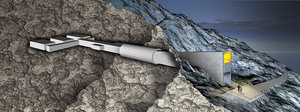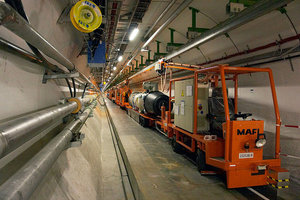

Underground structures offer advantages in terms of preservation of objects or products stored within the structure. For example, food preservation is enhanced by the moderate and constant underground temperature conditions and the ability to maintain a sealed environment.
Small amounts of earth cover are very effective at protecting from the transmission of airborne noise. Similarly, if the vibration sources are at or near the ground surface, levels of vibration will diminish rapidly with depth below ground and distance of the source.
As with noise and vibration, the earth provides protection by absorbing the shock and vibrational energy of an explosion.
In cases of explosion, radioactive fallout, and industrial accident, underground structures can be valuable emergency shelter facilities, if provided with the ability to exclude or filter contaminated outside air.
Since decades, underground tunnels have been used to make scientific research, specially in the field of particles physics. At the border of france and Switzerland special tunnels have been built since the middle of the 70's such as the Super proton Synchrotron (SPS) commisionned in 1976.

This device is installed in a 7km in circumference tunnel.
Later on the LEP (Large Electron positron) has been built; wiith its 27 km in circumference it is still the largest electron-positron accelerator ever built.
Lately, in 2008; the Large hadron Collider started a new era of discovery at the high energy frontier. All these research have been made possible through the construction of tunnels.
One of the most representative examples of this beneficial effect is the Svalbard Global Seed Vault, a secure seedbank located on the Norwegian island of Spitsbergen near the town of Longyearbyen in the remote Arctic Svalbard archipelago.
The facility was established to preserve a wide variety of plant seeds from locations worldwide in an underground cavern. The Seed Vault holds duplicate samples, or "spare" copies, of seeds held in genebanks worldwide, providing insurance against the loss of seeds in genebanks, as well as a refuge for seeds in the case of large scale regional or global crises.
As the seeds need to be kept at a stable temperature of −18 °C (0 °F), the storage underground within the permafrost helps to maintain low temperatures, also providing a big thermal inertia.
Even if the cooling equipment fails, at least several weeks will elapse before the temperature rises to the −3 °C (30 °F) of the surrounding sandstone bedrock.
